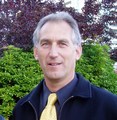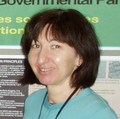FLASHBACK TO 2007: At Water Balance Model Partners Forum, Environment Canada's Laura Maclean provided perspective on how relationships underpin changes in land development practices

“The experience of the Greater Vancouver region shows how important it is to have a way to bring the right people together at the right time, and in so doing build a network that can make things happen. Looking back, much of what we have collectively accomplished in recent years in the field of rainwater management can be traced back to relationships,” stated Laura Maclean. “We now see a comparable relationship-building process taking shape on Vancouver Island.”




